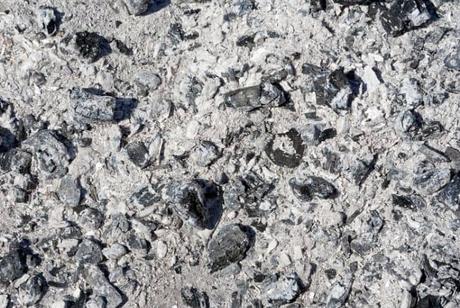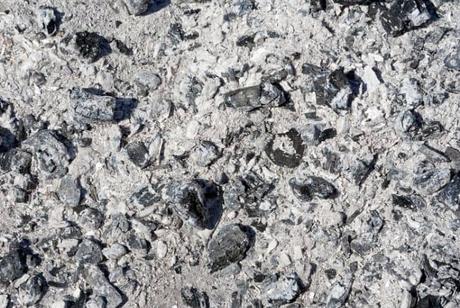The world over, wood has a myriad of uses and has been used for thousands of years. It can be used for construction, making tools, as furniture, for making paper, as a weapon, and of course for fuel. As a fuel, wood is combusted providing heat that has a variety of uses, including cooking.
After combusting wood, ash is left behind. There are many uses for this ash, including as a fertilizer, for pottery, for compost, and much more. This article will look into wood ash, its effects on the soil and its potential benefits to plants, most specifically roses.

Do Roses Like Wood Ash?
Very much! Roses love wood ash, because of its properties. Among other nutrients, roses need potassium, phosphorous, magnesium, calcium and nitrogen to grow well, all properties present in wood ash. Particularly, wood ash is good for roses because of the potassium and phosphorous.
All these nutrients, not only help the rose plant grow well, but they also help it, along with other plants build stronger roots as well as a sturdy stem. Wood ash is also alkaline, a property that can come in handy for roses on quite acidic soils. Wood ash comes in handy especially in acidic soils as it will help neutralize the pH of the soil, given that roses thrive in soils with a pH of between 6-7.
Roses do benefit from the occasional light sprinkling of wood ash in the growing season before they flower. Wood ash contains a good quantity of potash which is an essential nutrient that roses need to develop flowers and produce top-quality blooms.
Additionally, wood ash has the benefit of not containing any seeds or roots that can develop into weeds, unlike other compost or mulch that are derived from garden waste or kitchen scraps, which can harbor seeds. With wood ash, you will therefore not have to spend unnecessary time weeding around your roses.
Among other plants that love alkaline soils include citrus trees, lavender, garlic, asparagus, hydrangeas and lettuces. Although most roses prefer slightly acidic soil, there are a few that do well in alkaline soil.
There are several roses that can grow in alkaline soils and include Linda Campbell, Robin Hood, Square Dancer, William Booth, Fred Loads, Chuckles, Country Song, Elias, Fergus Gamez, JP Connell, and Morden Snowbeauty.
When to Use Wood Ash for Your Roses?
The best time to apply wood ash or wood ash containing compost around your roses is before the growing season, at the start of spring. The potassium (potash) content of the wood ash promotes flower growth to give your roses the best possible bloom for as long as possible.
Applying just before or at the start of spring allows the water-soluble potassium to reach the roots of your roses at the right time to promote flowering.
Also, consider adding wood ash if the pH of your soil is too acidic. Be sure to test your soils before adding the ash, as if the soil is alkaline, and you decide to add the ash, you will only be adding to the alkalinity of the soil. Roses like slightly acidic soil with a pH of 6.0 to 6.9.
Therefore if your soil is below this range or is more acidic than this, adding wood ash to the soil will raise the pH to a level that your roses like. Adding it to the soil that is more alkaline than this, will result in conditions that cannot support the proper growth and development of roses.
It is advisable to avoid adding wood ash compost at the end of the summer as this may promote new growth on your rose late in the season when winter is around the corner. New growth is more susceptible to damage in cold weather and as soon as the first frost arrives the delicate new growth will be killed.
If you have a surplus of ash, it would be best to keep it dry for use next season or spread it elsewhere in the garden as other plants will appreciate the potassium content. Lawns in particular can benefit from the addition of wood ash.
How Much Wood Ash Should Be Added to Soil?
How much wood ash is to be added to the soil is entirely dependent on the current pH of the soil. To do so, grab a pH testing kit from your local garden center or simply order one online. Once you have it, test the pH of the soil and determine if your soil will benefit from the addition of wood ash or not.
For roses, if the pH is below 6.0, consider adding some wood ashes to bring the pH of the soil into a good range for the roses. If it is between 6.0 and 6.9, there is no need to add ash to the soil as it will make the soil more alkaline, which will not benefit your roses.
The tricky part is deciding how much ashes to add to your soil. The suggestion to beat, is to take a sample of your soil and measure its pH. Doing this requires no degree in Chemistry, but only a simple understanding of the pH scale.
Assuming the pH is lower than 6 or simply the soil is more acidic, then add a little bit of wood ash. After this, measure the pH again. Continue doing this until you get the pH in a good range for your roses, which is between 6.0 and 6.9. Be sure to measure the amount of soil you are using and the amount(s) of wood ash you add.
Once you have the ratios worked out, you can add the right amount to your roses’ soil. After you have finished adding the wood ash to your soil, go back and check the pH. If the result shows too alkaline, add sulfur and peat moss to the soil to bring it into the correct range.
Also, whenever you add wood ash, spread it out and don’t layer it too thickly. Also, make sure to water it in and add some aged manure or compost as well, to prevent it from blowing around the garden and becoming a nuisance
How to Use Wood Ash for Your Roses?
There are two ways to use wood ash for your roses: adding it to individual plants or adding it to the entire rose garden
If you are going to add it to individual rose bushes and you have not planted them in the ground already, then you should dig holes of between 6″ and 12″. Add your ashes and other nutrients to the hole, while putting some of the soil back in and mixing it well.
Then plant your roses on top with the remaining soil. Work some of the roots and topsoil into the ash, soil mixture. You can also mix the wood ash into all of the soil before planting. Then put some of the mixtures back into the hole. Finally, plant the rose bush in the hole with the remaining soil.
If you want to put wood ash in your entire rose garden, till your garden first. Then sprinkle some ashes on top, mix the ashes with the soil and put some soil on top to cover, in that order. Check the pH of the soil to make sure it is in the best range for your roses.
Finally, dig your holes and plant your rose bushes in your garden. If the pH is still too acidic, add some more wood ash and if it exceeds and becomes more alkaline, add sulfur and peat moss to the soil to bring it into the correct range
What Nutrients Will Wood Ash Give to Your Roses?
Wood ash provides potassium, phosphorus, magnesium, calcium, and some other trace minerals. Wood ashes contain between 5% and 7% potassium and 2% phosphorus From this mix, roses particularly require potassium, phosphorus, and nitrogen, which can be referred to as macronutrients.
You will not get the nitrogen from wood ash because it is released as a gas when the wood is burned. Generally, wood ash also contains calcium carbonate in high quantities, the active ingredient used in store-bought lime fertilizers. Lime is generally used to add nutrients to the soil, speed up the breakdown of organic matter and decrease soil acidity.
The potassium also referred to as potash, is needed for chlorophyll production through the process of photosynthesis as well as blossom development. Potassium also helps roses recover when stressed by insect and disease damage, or by extreme weather conditions.
The lack of potassium can result in yellow leaf margins, weak flower stems and poorly developed buds. Phosphorus maintains the roots so nutrients can be absorbed properly by the rose bush. It promotes healthy root development and abundant flower production. A shortage of phosphorous can result in leaf drop, weak flower stems, and buds that won’t open.
Nitrogen, although absent in wood ash, encourages healthy, vigorous leaf growth. Since a rose’s ability to make flowers resides in its leaves, healthy foliage results in more flowers. Too much nitrogen will result in too much foliage and fewer blooms, while not enough nitrogen results in yellow leaves, stunted growth and smaller blooms. To thrive, roses also require micronutrients that include calcium, magnesium, sulfur, boron, copper, iron, manganese, and zinc
Which Other Plants Like Wood Ashes?
1. Plants with potassium deficiencies
Potassium is vital for plants for healthy flowering and subsequent fruiting. Wood ash contains enough potassium to help any plant through the flowering and fruiting process. It can therefore act as a soil amendment for plants suffering from potassium deficiencies. Potassium deficiencies appear in plants as browning or discoloration of leaf edges.
Before concluding it is a potassium deficiency, it is important to test the soil and rule out any other possible diseases. However, if potassium is lacking, wood ashes can add it to the soil. In addition to potassium, wood ashes contain other essential nutrients like calcium, magnesium and phosphorus.
Consider using young hardwood ashes, like oak or maple, when treating a severe potassium deficiency. This is because it contains up to 7% potassium, while softwood ashes and older hardwood ashes may contain as little as 3% potassium
2. Plants in overly acidic soils
Wood ash has a liming effect on the soil and can therefore be used on the lawn, on ornamental flowers, plants and shrubs as well as in the garden to reduce soil acidity. Wood ash raises the pH of your soil, and therefore, always test the soil to ensure that it does not become overly alkaline. Using wood ash on acid-loving plants like berries, including raspberries, strawberries and blueberries will be disastrous to them.
3. Plants overrun by diseases and pests
Wood ash is perfect for putting pests at bay. Cooled, untreated wood ashes directly from fire and applied as a mulch, or wood ashes mixed into compost, are useful around cabbage and onion plants to keep away root maggots. It also keeps slugs and snails from overrunning alkaline-loving flowers and ornamental plants.
You can also use wood ash to raise the pH of the soil, and thereby eliminating diseases. The best example here is brassicas like broccoli and cauliflower, whose club root diseases can be eliminated by simply raising the pH of the soil.


